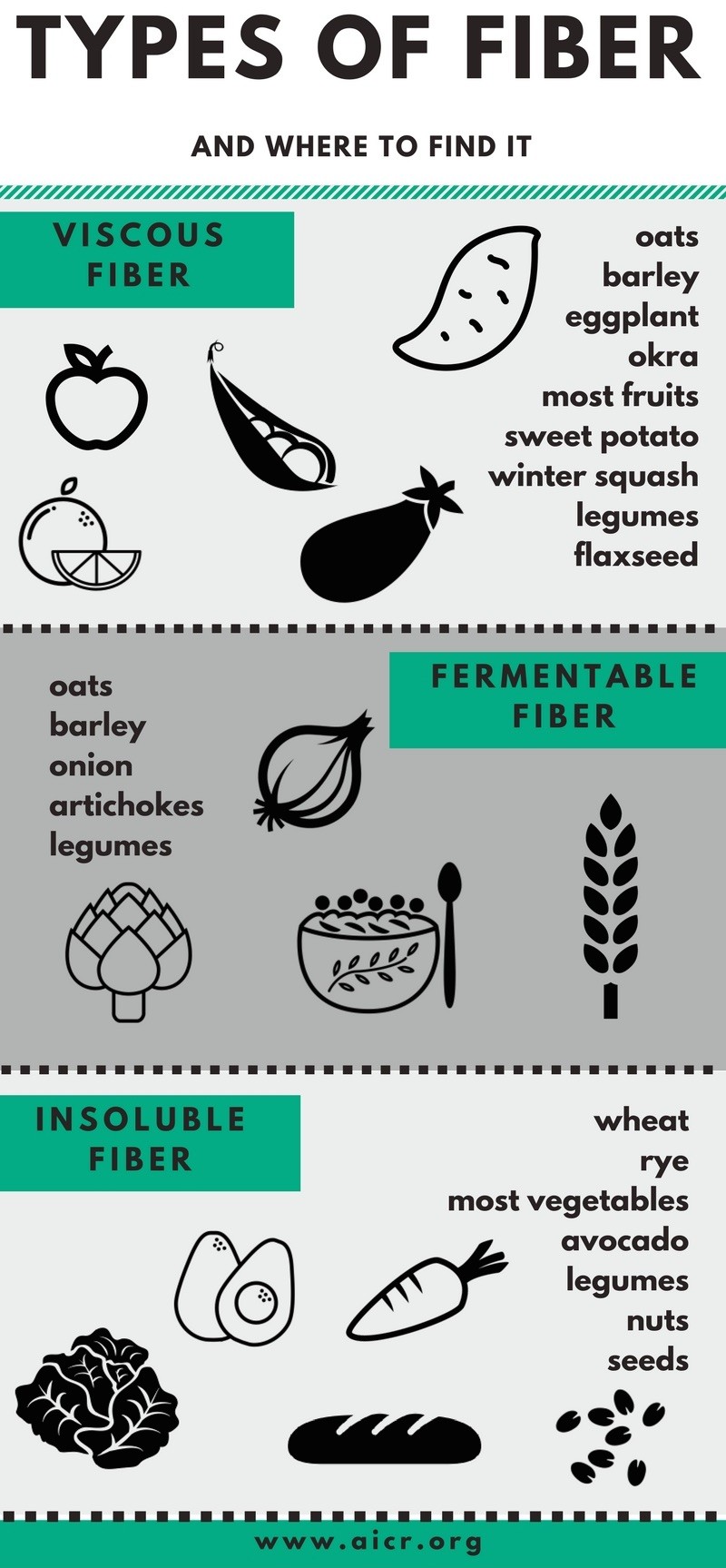Q: Do I need a certain type of dietary fiber or should I just aim for the recommended total?
A: Current research most strongly supports aiming to meet recommendations for total dietary fiber, yet different types of fiber offer unique benefits. So to get the most overall health protection, include a wide variety of foods that provide dietary fiber every day.
You probably are familiar with soluble and insoluble fiber. Research has now moved forward to identifying fiber that is more specifically based on the way it seems to work in the body. Here are three major types:
Viscous fibers form a gel in the intestinal tract. These fibers can lower LDL cholesterol – known as the ‘bad’ type – and reduce blood sugar surges after meals by slowing the absorption of carbohydrates. Some evidence suggests that these gel-forming fibers may support weight management by increasing satiety.
Fermentable fibers are those that health-promoting gut bacteria use as food to produce such compounds as butyrate, which show cancer-protective effects in the colon. More research is needed to clarify how gut bacteria might affect risk of colorectal cancer and other chronic diseases.
Insoluble or Non-fermentable — “bulking” — fibers create larger, softer stools and speed the passage of waste through the digestive tract. This dilutes potential carcinogens exposed to the colon, and can help prevent or relieve constipation. Because non-fermentable fiber passes through the intestine relatively intact, your body does not absorb any of its calories.
 Dietary fiber is found in plant foods – grains, vegetables, fruits, legumes, nuts and seeds. In general, the least-processed choices are those that provide more fiber. For example, whole grains provide more than refined grains, and whole fruit supplies more than juice.
Dietary fiber is found in plant foods – grains, vegetables, fruits, legumes, nuts and seeds. In general, the least-processed choices are those that provide more fiber. For example, whole grains provide more than refined grains, and whole fruit supplies more than juice.
Foods are always a mixture of several types of fiber. Many high-fiber foods are better sources of some particular types, which is why it’s important to eat a variety to get the widest range of potential benefits.
How much fiber you should aim for each day depends upon many factors. The Institute of Medicine recommends that women up to age 50 should consume 25 grams a day, and 21 grams/day for women over 50. Men up to age 50 should consume 38 grams/day, and 30 grams/day over age 50.
These recommendations are based on evidence for fiber’s role in reducing risk of heart disease.
When it comes to lower cancer risk, the latest AICR/WCRF report on colorectal cancer shows lowest risk is associated with dietary fiber of about 30 grams/day or more. If you eat little fiber now, increasing your intake any amount will lower your risk somewhat. The report found the most dramatic drop in risk was when people went from very low fiber intake to simply aligning with current average U.S. intake — about 17 grams a day – even though that is below fiber recommendations.
If your healthcare provider recommends higher fiber intake than you can reach with healthy eating choices, you can boost fiber by choosing foods with various sources of added fiber or a fiber supplement. But remember that although dietary fiber itself provides multiple health benefits, foods that are naturally high fiber also supply a bevy of protective nutrients and phytochemicals. So aim to get a healthy amount of fiber within an overall healthy eating pattern.
Karen Collins, MS, RDN, CDN, is AICR’s Nutrition Advisor. Karen is a speaker, writer and consultant who specializes in helping people make sense of nutrition news. You can follow her blog, Smart Bytes®, through her website and follow her on Twitter @KarenCollinsRD.






another nutrient that helps protect the cells of the body from free radicals and also helps strengthen the heart muscle fibers.It works with a healthy diet and regular exercise.